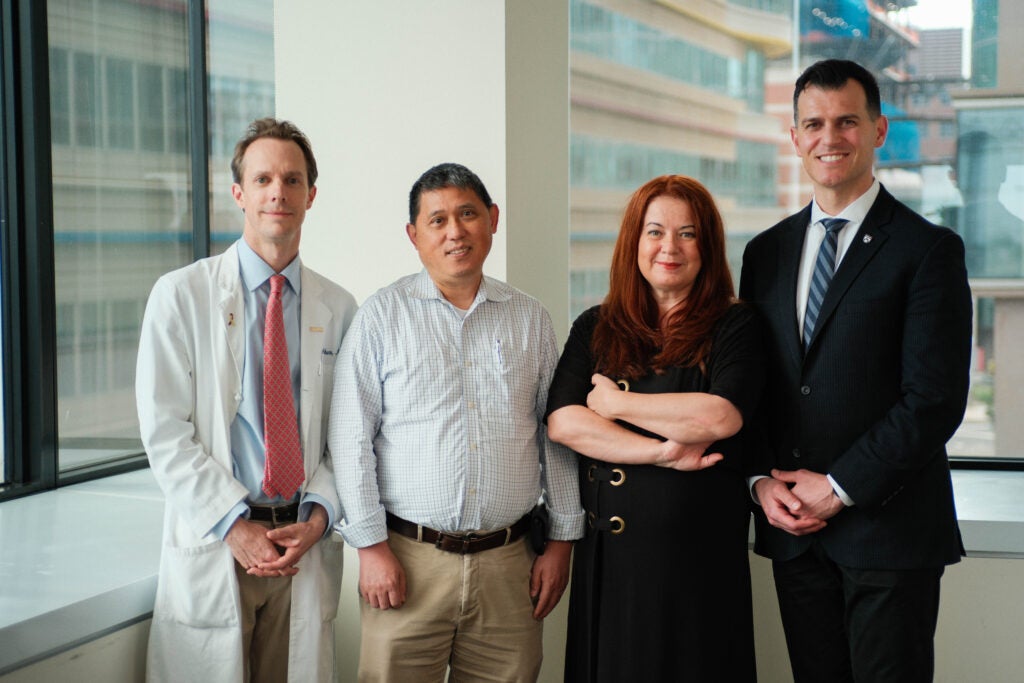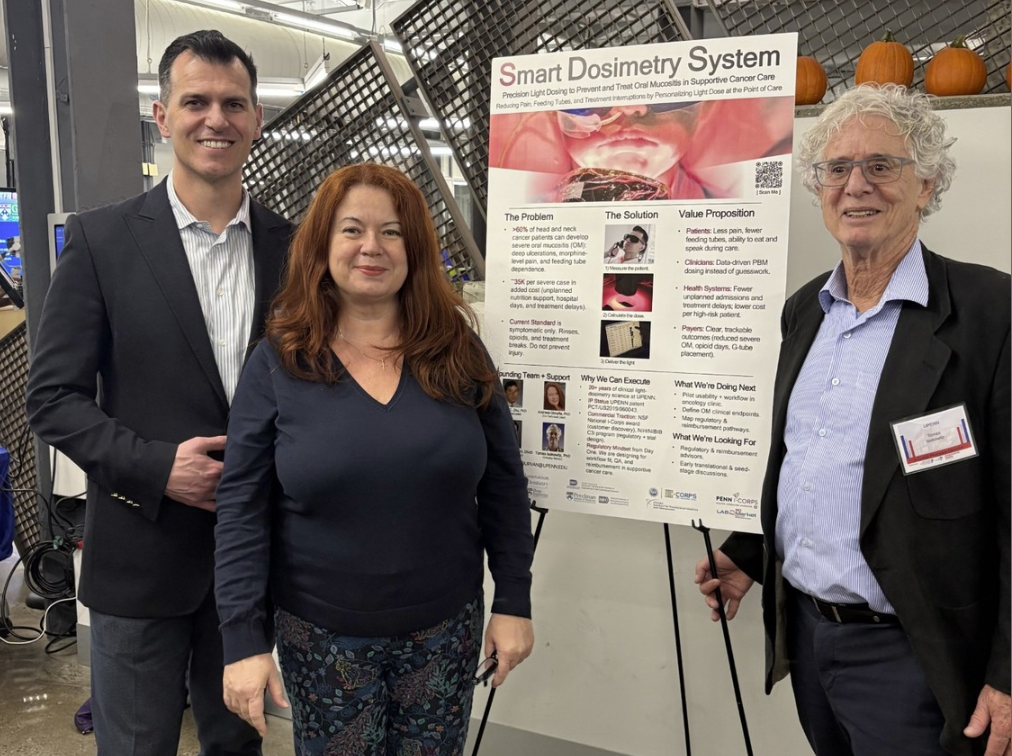Smart Dosimetry System (SDS), founded by Timothy Zhu, PhD, Professor of Radiation Oncology at Penn Medicine, and Andreea Dimofte, PhD, Medical Physicist at Penn Medicine and Lab Manager of the Zhu Lab, and Dennis Sourvanos, DDS, DScD, Clinical Assistant Professor in the Department of Periodontics at Penn Dental and Adjunct Assistant Professor, Department of Radiation Oncology at Penn Medicine, was selected for the highly competitive National NSF I-Corps Teams program, an initiative that awards $50,000 to advance groundbreaking technologies through intensive customer discovery and market validation.
The SDS team participated in Penn I-Corps in Fall 2024, and will be mentored in the National NSF program by Dr. Tomas Isakowitz. In addition, the team is participating in the NIH/NIBIB Concept to Clinical: Commercializing Innovation (C3i) program, a 24-week initiative focused on clinical trial design and regulatory pathways. Together, these programs will help de-risk their technology, refine their business model, and accelerate translation into patient care.
Watch an in-depth video of the SDS team telling the story of their technology and showcasing how it helps patients:
More About SDS
The Smart Dosimetry System (SDS) is a technology that delivers precise, real-time light dosing by measuring how tissues absorb and scatter light, addressing the problem of inconsistent delivery that limits today’s therapies. This is especially important for patients with oral mucositis, a painful side effect of cancer treatments that causes open mouth sores, severe pain, and often forces treatment delays or costly hospital stays. By making photobiomodulation therapy more precise and reliable, SDS has the potential to dramatically reduce the severity of these lesions, ease pain, speed recovery, and cut the high costs tied to complications, all while improving outcomes in cancer and other light-based treatments.

From right to left: The SDS team Dennis Sourvanos, Andreea Dimofte and Timothy Zhu with their colleague Nick Lukens, MD, Associate Professor of Radiation Oncology at the Hospital of the University of Pennsylvania.

From left to right: Dennis Sourvanos, Andreea Dimofte, and Tomás Isakowitz, PhD, Program Director for the Penn I-Corps Program at the Penn Startup Showcase at Pennovation Works.